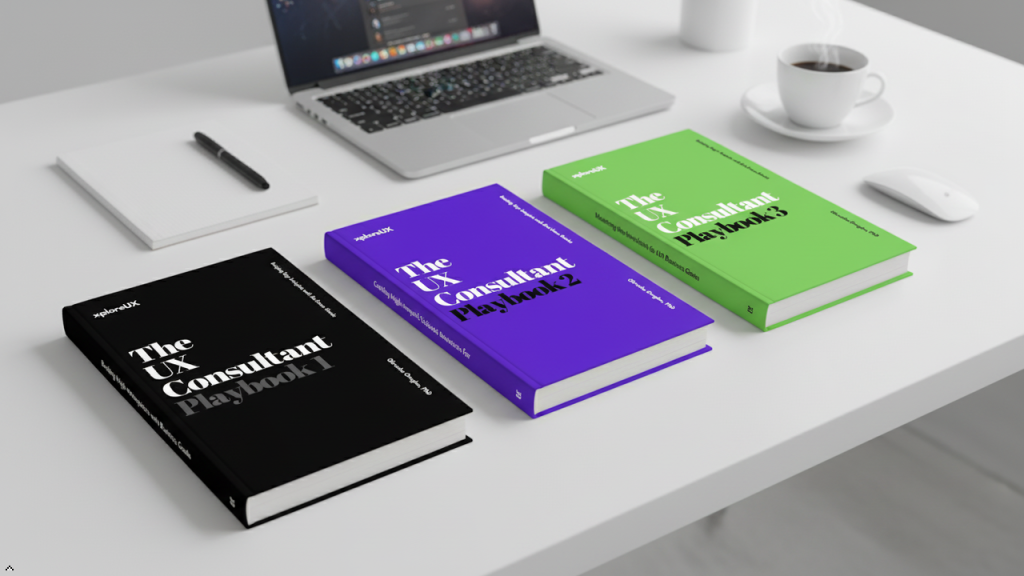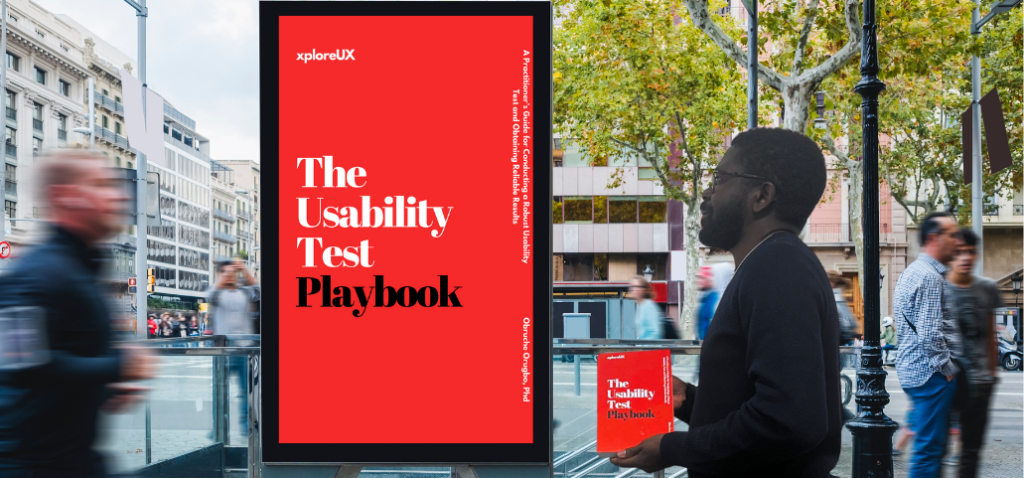
Creating a holistic User Experience (UX) strategy is critical for medium-sized businesses aiming to differentiate themselves in an increasingly competitive market. A well-designed UX strategy not only addresses user needs but also aligns with business goals, creating a cohesive ecosystem where users feel valued and engaged. The process of crafting a UX strategy requires a blend of research, design thinking, technical know-how, and a deep understanding of your business’s unique characteristics.
In this comprehensive guide, we will explore the key components required to develop a holistic UX strategy for your medium-sized business. This includes understanding your users, defining clear objectives, ensuring cross-functional collaboration, investing in iterative design processes, and fostering a culture of continuous improvement.
At the core of any UX strategy is the user. Without a deep understanding of your target audience, any design effort risks being ineffective or even counterproductive. Developing a user-centered approach is essential to creating a seamless experience that resonates with your customers and keeps them engaged with your brand.
Conducting User Research
User research is the foundation of understanding who your users are, what they need, and how they interact with your products or services. The insights gleaned from research inform every subsequent step in your UX strategy.
Qualitative vs. Quantitative Research
Both qualitative and quantitative research methods are essential for understanding users.
– Qualitative research focuses on gathering deep insights into user behaviors, motivations, and pain points. Techniques such as user interviews, focus groups, and ethnographic studies provide rich, narrative-driven data. For medium-sized businesses, this approach can offer an intimate understanding of specific customer segments.
– Quantitative research, on the other hand, uses numerical data to highlight trends, patterns, and measurable metrics. Tools like surveys, web analytics, and heatmaps provide hard data that can be used to validate hypotheses or identify areas of friction in your digital products.
Combining these methods allows you to get a well-rounded picture of your users. Qualitative data gives you the “why” behind user behavior, while quantitative data provides the “what.”
Developing User Personas
After gathering research, the next step is to develop user personas—fictional representations of your key user groups. Personas help encapsulate the core needs, frustrations, and goals of different user segments.
For medium-sized businesses, personas should reflect the diversity within your customer base. If your business spans multiple industries or serves various demographic groups, your personas should capture those distinctions. Each persona should include:
– Demographics (age, occupation, education level)
– Behaviors (how they use your product or service)
– Goals (what they are trying to achieve)
– Pain points (frustrations they experience)
Journey Mapping
User journey mapping is another crucial tool in understanding how customers interact with your product or service from start to finish. It visualizes the steps a user takes to achieve their goals, highlighting touchpoints, pain points, and moments of delight.
By mapping the user journey, you can identify opportunities to improve the experience, reduce friction, and ensure consistency across all channels. This is especially important for medium-sized businesses that may have multiple touchpoints, such as an e-commerce site, physical store, mobile app, and customer service team.
Creating Empathy
A holistic UX strategy requires an empathetic understanding of your users. Empathy in UX design means not just acknowledging user pain points but designing in a way that addresses their emotional and psychological needs. Medium-sized businesses, often more nimble than large corporations, have a unique opportunity to engage with users in a personalized way that makes them feel heard and understood.
Incorporating empathy into your UX strategy can take many forms, from thoughtful interface design that reduces cognitive load to offering personalized customer support when needed. Empathy is the key to creating a strong emotional connection between your brand and your users, which in turn fosters loyalty and long-term engagement.
A successful UX strategy must be aligned with your overall business goals. Without a clear understanding of how UX fits into the broader picture, your efforts may lack focus and direction. Setting measurable objectives ensures that your UX initiatives not only enhance the user experience but also contribute to your business’s bottom line.
Aligning UX with Business Goals
For medium-sized businesses, UX should support key business outcomes such as increasing customer retention, improving conversion rates, or enhancing brand loyalty. To do this, you must first identify your business goals and then determine how UX can help achieve them.
For example, if one of your business goals is to increase online sales, your UX strategy should focus on improving the e-commerce experience. This could involve streamlining the checkout process, optimizing product search functionality, or enhancing mobile usability. On the other hand, if your goal is to reduce customer support calls, your UX team could focus on designing self-service tools such as FAQs, tutorials, or chatbots.
Defining Success Metrics
Once your business goals are aligned with UX, the next step is to define how you will measure success. These key performance indicators (KPIs) should be directly tied to your objectives. For example:
– Conversion rate: Measures the percentage of users who complete a desired action, such as making a purchase or signing up for a newsletter.
– Task success rate: Tracks how often users are able to complete a task without encountering issues or needing help.
– Customer satisfaction (CSAT): Captures user feedback on their overall experience, often through surveys or ratings.
– Net Promoter Score (NPS): Measures the likelihood that a customer will recommend your product or service to others.
– Time on task: Evaluates how long it takes users to complete key actions, helping to identify areas where processes can be streamlined.
Having clear metrics allows you to track progress and demonstrate the ROI of UX efforts. For medium-sized businesses, this is particularly important as resources may be more limited compared to larger enterprises.
Prioritizing Initiatives
It’s important to recognize that not all UX problems can or should be solved at once. Prioritization is key to ensuring that your UX team focuses on initiatives that will have the biggest impact. Start by evaluating potential projects based on factors like:
– Impact on business goals: How much will this initiative contribute to revenue, customer satisfaction, or other key metrics?
– Feasibility: What resources (time, budget, talent) are required, and are they available?
– User pain points: Are there recurring issues that need immediate attention? Which problems, if solved, will provide the greatest value to users?
Medium-sized businesses often need to be strategic with their resources, so prioritizing high-impact projects is essential for getting the most out of your UX strategy.
A holistic UX strategy doesn’t just involve the design team—it requires collaboration across various departments, including marketing, product management, customer service, and IT. In a medium-sized business, fostering cross-functional collaboration is crucial to creating a cohesive and unified user experience across all touchpoints.
Building a UX-Centric Culture
For UX to truly succeed, it needs to be integrated into the very fabric of your company’s culture. This starts at the leadership level. Company executives and managers must recognize the value of UX and actively promote its importance across the organization.
One way to achieve this is by creating a UX evangelist role within the company. This person serves as a bridge between different departments, ensuring that UX principles are considered in decision-making processes and that all teams understand how their roles impact the overall user experience.
Collaboration Between Designers and Developers
The relationship between designers and developers is one of the most critical collaborations in the UX process. While designers focus on creating a visually appealing and functional interface, developers are responsible for bringing those designs to life in the most efficient and technically feasible way possible.
To foster effective collaboration between these two groups:
– Involve developers early in the design process: This ensures that technical limitations or opportunities are considered from the outset.
– Use design systems: A shared design system helps ensure consistency across all platforms and simplifies communication between designers and developers.
– Adopt agile methodologies: Agile frameworks, such as Scrum, encourage iterative development and constant feedback, allowing for more seamless collaboration and quicker response to user feedback.
Customer Service and UX
Customer service teams have direct access to invaluable user feedback and pain points. By establishing strong communication channels between customer service and UX teams, your business can better understand and address user frustrations. Customer service insights can inform design decisions, and UX improvements can, in turn, reduce the volume of support tickets.
For medium-sized businesses, the relationship between customer service and UX can also create a feedback loop where issues are identified and resolved faster, ultimately improving the overall user experience.
Marketing and UX
Marketing and UX teams should work closely together to ensure that your brand’s messaging and experience are aligned. Marketing often serves as the first point of contact between your business and potential customers, so it’s critical that the promises made in marketing campaigns are reflected in the actual user experience.
For example, if your marketing materials highlight ease of use, but your website is difficult to navigate, users will quickly lose trust in your brand. By collaborating with UX, marketing teams can ensure that their messaging is not only compelling but also backed up by a seamless and intuitive user experience.
A holistic UX strategy is not a one-time project; it is an ongoing process that evolves as user needs change and new technologies emerge. Medium-sized businesses must adopt an iterative design process that allows for constant testing, feedback, and improvement.
The Role of Prototyping
Prototyping is a critical step in the UX design process. By creating early-stage mockups or interactive models of your product, you can quickly gather feedback and identify potential issues before investing in full-scale development.
For medium-sized businesses with limited resources, prototyping allows for efficient use of time and budget. Rather than investing in building a fully-functional product that may have flaws, prototyping enables you to test and validate ideas early on.
User Testing and Feedback Loops
Once you have a prototype, user testing is essential for identifying usability issues and gathering feedback. User testing should be conducted at multiple stages throughout the design process, from early wireframes to near-final versions of your product. Techniques include:
– A/B testing: Comparing two versions of a design to see which one performs better with users.
– Usability testing: Observing users as they interact with your product to identify friction points.
– Surveys and feedback forms: Collecting user feedback on specific aspects of the experience.
For medium-sized businesses, establishing a feedback loop between users and the design team ensures that user needs are constantly being addressed. Regularly iterating on designs based on user feedback helps to refine and improve the user experience over time.
Data-Driven Decisions
Incorporating data into your design process allows for more informed decision-making. Tools like Google Analytics, Hotjar, or UX analytics platforms such as FullStory provide valuable insights into user behavior, allowing you to track how users are interacting with your product and identify areas for improvement.
For example, if analytics reveal that users are consistently abandoning your checkout process at a specific step, this data can guide UX decisions to streamline that part of the flow. By making data-driven decisions, medium-sized businesses can ensure that their UX efforts are focused on areas with the greatest impact.
To maintain a competitive edge, medium-sized businesses must embrace a culture of continuous improvement. UX is not a static discipline; it evolves alongside changing user expectations, new technologies, and shifting market trends.
Staying Current with Industry Trends
The field of UX is constantly evolving, with new tools, technologies, and design patterns emerging regularly. Staying up-to-date with the latest UX trends is essential for maintaining a modern, competitive user experience.
For example, the rise of AI-driven chatbots, voice interfaces, and immersive technologies like AR/VR are reshaping how users interact with digital products. By staying informed and incorporating relevant trends into your UX strategy, medium-sized businesses can remain ahead of the curve and meet the changing expectations of their users.
Continuous Learning and Skill Development
Investing in continuous learning and skill development is critical for maintaining a high level of UX maturity within your business. This can involve:
– Attending UX conferences and workshops
– Providing ongoing training for your UX team
– Encouraging cross-disciplinary knowledge sharing (e.g., having developers attend design workshops or vice versa)
For medium-sized businesses, investing in the development of your team’s skills not only ensures that your UX strategy stays current but also fosters a culture of innovation and creativity.
Gathering Ongoing User Feedback
Finally, a holistic UX strategy must incorporate mechanisms for gathering ongoing user feedback. This can be achieved through:
– Regular user testing sessions
– Continuous monitoring of analytics
– User feedback surveys
By regularly gathering and acting on feedback, your business can stay responsive to user needs and continuously improve the user experience over time.
Crafting a holistic UX strategy for your medium-sized business involves more than just designing attractive interfaces. It requires a deep understanding of your users, alignment with business goals, cross-functional collaboration, iterative design processes, and a commitment to continuous improvement.
By putting users at the center of your strategy, fostering collaboration across teams, and constantly iterating on your designs, you can create a user experience that not only meets but exceeds customer expectations. This, in turn, will drive business growth, increase customer loyalty, and set your medium-sized business apart in an increasingly competitive marketplace.




